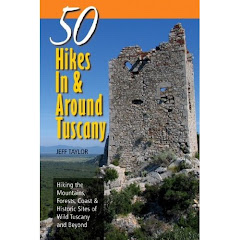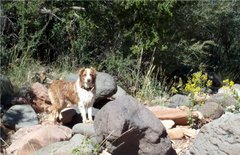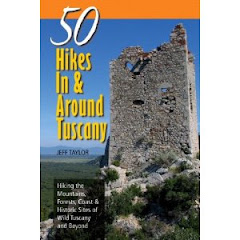Distance: 6.0 miles (10 km)
Elevation: 8,800 - 10,450 feet (2685 - 3186 m)
Difficulty: Strenuous
Time of Year: June to October
The Ruby Mountains rise like a sentinel high above the desert valleys of the Great Basin. Located in a remote region of Northern Nevada, just south of Elko, most people have probably never heard of them. But, if you have driven I-80 between Salt Lake City and Reno, you probably did see them just off to the south. The Ruby Mountains rise to over 11,000 feet. Thus, even in this extremely arid region of the country, they are an oasis of alpine meadows, rushing streams, and spectacular glacially carved canyons.
 |
| At the trailhead |
The hike to Liberty Pass is one of the true highlights of the Ruby Mountains. Located at the end of the famous Lamoille Canyon area, Liberty Pass offers spectacular vistas above the U-shaped valley that was carved by ice age glaciers. To access the trailhead, drive up the Lamoille Canyon Scenic Drive about 15 miles south of downtown Elko to the very end of the spectacular valley with its soaring cliff faces.
 |
| Hiking amongst the limber pines |
The trail begins by crossing some alpine meadows full of wildflowers in summer. The trail crosses a brook a few times over wooden log bridges. The first 1.5 miles climbs steadily up through scattered stands of ancient limber pines. After about 30 minutes or so you will arrive at the first in the series of lake you will see on this trip. These three small, nearly interconnected ponds, are collectively called Dollar Lakes. The first two are quite marshy and shallow, while the third is the largest and most open.
 |
| Dollar Lake |
At this point the trail begins to zigzag up a steeper slope as it heads for the next 1/2 mile to Lamoille Lake located at 9700 feet in elevation. It's crystal clear waters allow you to see the rock formations at the bottom of the lake. This is especially true as you climb vertically above the lake.
 |
| Above Lamoille Lake |
At this point the trail begins its most strenuous portion as it climbs up a near vertical slope above the lake. The trail is narrow and switches back-and-forth relentlessly for the next 500 vertical feet in elevation. The views become ever more expansive, especially as you begin to peer over the edge of the canyon walls to the outside of the Ruby Mountains. The Elko Valley begins to make an appearance.
 |
| Approaching Liberty Pass |
As you continue to climb, you will see a narrow rocky saddle well above you. That is Liberty Pass. It may appear as though you will never be able to make it up there across that rugged terrain. But, the trail is nicely graded such that it is surprisingly not so difficult as it appears.
 |
| Arriving at Liberty Pass |
Upon reaching Liberty Pass, you have incredible views out across the Ruby Mountains. Behind you, you can see the definite U-shape appearance of Lamoille Canyon. To the north, you can see out across Elko Valley. From the pass, the trail almost immediately descends down to Liberty Lake a couple hundred feet below. But, if stray off trail straight ahead you will arrive at a flat rocky outcropping with a spectacular view of the whole lake below you.
 |
| The View of Liberty Lake From Liberty Pass |
After enjoying lunch at the pass, you just return the way you came. To me, going up is always easier than going down. The section from the pass back to Lamoille Lake is the hardest, as the loose rock and steep gradient does give your knees a pounding. But, after the lake, the rest of the trip down is pretty relaxing.
 |
| Looking down on Lamoille Canyon from Liberty Pass |
The Ruby Mountains are truly an unexpected surprise in the middle of the boring Great Basin Desert. This oasis of streams, rugged mountains, and panoramic splendor is just what the body and mind need on a long trip across Nevada, whether going from Salt Lake to Reno on I-80, or as we did it, heading south on U.S. 95 back to Arizona. Oh, and if you are looking for a place to stay and want to avoid yet another Motel-6 or a casino, the Thomas Canyon Campground, halfway up Lamoille Canyon, is one of the most spectacular settings I have ever seen for setting up a tent.
 |
| After a long hike, we enjoyed the sunset at Thomas Canyon Campground |





















